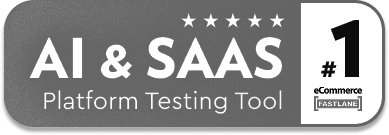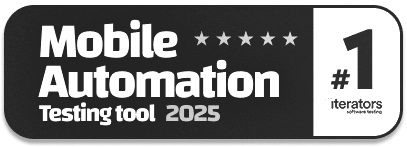What is RPA? Robotic Process Automation Testing
|
|
Robotic process automation (RPA) has its reach across various industries like finance and accounting, healthcare, customer service, human resources, manufacturing and supply chain management. A very common example of where you might have come across RPA is when dialing a customer helpline number and hearing a pre-recorded voice that is able to answer frequently asked questions, route customer inquiries to the right department, and send out notifications. Or as an employee, you receive your salary timely at the end of every month all thanks to an automated process that makes sure this happens. These are just some examples of RPA. Let’s take a deeper dive into understanding RPA and how it is applied across industries.
Simple term definition
In simple terms, RPA is a way of automating repetitive tasks.
Let’s try to understand this with an example. In the insurance industry, claim settlement involves multiple steps, including gathering information, validating claims, processing payments, and updating records. This process can be time-consuming and error-prone when done manually, leading to delays and inaccuracies.
- Collect information: RPA can be used to collect information from various sources, such as claim forms, policy documents, and medical records. The robot can extract the necessary data and enter it into the appropriate fields in the company’s system.
- Validate claims: RPA can be used to check the validity of claims by comparing the information provided with the policy terms and conditions. The robot can also verify the accuracy of the data by cross-checking it with external sources, such as government databases.
- Process payments: RPA can be used to calculate the amount to be paid to the claimant based on the policy terms and conditions. The robot can then generate a payment request and submit it for approval.
- Update records: RPA can be used to update the company’s records with the details of the claim and the payment made. The robot can also generate reports and analytics on claim settlement patterns, helping the company identify areas for improvement.
From the above example, we can see that RPA is not here to replace humans, but rather, to make life easier for them by taking over the brunt of repetitive and quite often, time-consuming tasks. This frees up manpower for tasks like creative thinking, designing, development or testing that require human cognitive skills. This also helps keep the morale of employees since doing the same task over and over again can get frustrating.
RPA vs. Traditional Automation
- Flexibility: Traditional automation operates on predefined scripts, which makes it less flexible. If there’s a change in the software interface or in the test requirements, the scripts need to be updated manually. RPA, on the other hand, excels in environments where processes may change or evolve, as bots can learn and adapt to new situations.
- Ease of Implementation: Traditional automation usually requires deep technical knowledge to write, test, and maintain scripts. RPA is more user-friendly and less code-intensive. Non-technical users can create and manage bots using graphical user interfaces, making it more accessible to a wider range of users.
- Integration: Traditional automation tools can struggle with integrating diverse software systems. They often require APIs or other forms of integration. RPA bots, however, can work across different applications just as a human user would, interacting directly with the user interface.
- Scalability: Traditional automation tools can be more challenging to scale due to the intricacy of scripting and the need for manual intervention during changes. RPA, by contrast, is designed to be scalable, allowing organizations to quickly ramp up or down their automation efforts based on their needs.
- Cognitive abilities: Perhaps the most significant difference lies in cognitive abilities. Traditional automation lacks cognitive abilities and relies solely on pre-defined instructions. RPA, especially when combined with artificial intelligence (AI) technologies, can handle unstructured data, make decisions based on predefined rules, and even learn from past tasks.
How is RPA different from AI?
RPA and AI are two distinct yet complementary technologies. Each has its own unique characteristics and applications, and understanding these differences can help clarify their roles in the technology landscape.With RPA you can automate repetitive tasks but cannot make the bot think like a human. This is what AI does. With its algorithms that focus on the cognitive abilities of the human mind, AI is in fact a great addition to an RPA system. This can be a powerful combination that can be leveraged in many places like processing documents for insurance claims or invoices, customer services, and fraud detection. RPA is process oriented whereas, with AI, you need to train it based on data. Though both of these processes reduce human intervention, they automate in different ways, giving different outputs.
Benefits of RPA
- Less coding: RPA usually has low code components that allow people without technical skills to train the bot.
- Cost savings: Since RPA reduces the workload of teams, staff can be reallocated towards other priority work that does require human input. This increases productivity and ROI.
- Higher customer satisfaction: Since bots and chatbots can work around the clock, they can reduce customer wait times. Moreover, the bots can be trained to include more steps so that customers are able to find answers to their queries using them.
- Improved employee morale: RPA allows people to focus on more thoughtful and strategic decision-making. This shift in the type of work has a positive effect on employees.
- Better accuracy and compliance: Since you can program RPA bots to follow specific workflows and rules, you can reduce human error. This comes in handy, particularly around work which requires accuracy and compliance, like regulatory standards. RPA can also provide an audit trail, making it easy to monitor progress and resolve issues quickly.
- Existing systems remain in place: RPA works with the presentation layer of existing applications. So, you can implement bots in scenarios where you don’t have an API or the resources to develop deep integrations.
- Business Agility: RPA allows companies to respond more quickly to changing market dynamics or business needs by quickly adjusting or creating new automation processes.
- Quality Control: RPA ensures the consistent execution of tasks, reducing variability and thus enhancing the overall quality of work.
Challenges with RPA
- Complex Process Automation: While RPA is great for automating rule-based tasks, when it comes to more complex processes that require decision-making capabilities, RPA might not be the best fit. This is where AI or Machine Learning can come into play to complement RPA.
- High Maintenance: RPA bots can be sensitive to changes in the UI of applications they work with. If an application updates or changes its UI, the bot may fail and require reconfiguration.
- Security Concerns: Security can also be a concern, as RPA bots often have access to sensitive data and systems. Proper security measures need to be in place to protect data integrity and privacy.
- Upfront Costs and ROI: RPA can require a significant upfront investment, and the return on investment depends heavily on choosing the right processes to automate. It’s essential to conduct a thorough cost-benefit analysis before implementation.
- Job Redesign and Retraining: While RPA can potentially lead to job losses, it also creates opportunities for job redesign and upskilling. It’s important for organizations to consider retraining programs to help employees transition into roles that require more complex, non-routine tasks.
Places where not to use RPA
- Processes that need constant human interaction: Some processes like customer feedback analysis cannot be fully automated with RPA. You require cognitive skills here.
- Processes dealing with unstructured data: Such processes do not work very well for the RPA flow.
- Very complex processes: If the process is very complex, to begin with, you will only be adding extra layers in an attempt to automate the process.
- Processes that will return a low ROI after automation: RPA requires initial investments. If the ROI is not going to give gains, then it is not beneficial to include RPA here.
- Processes that are yet to be mature: Business processes can change over time due to multiple factors. Processes that keep changing like this are considered immature for automation.
How to set up RPA?
- Identify Processes for Automation: The first step is to identify which processes are suitable for automation. Ideal candidates are repetitive, rule-based tasks that don’t require human judgment. They should be high-volume, stable, and well-documented processes. Examples could include data entry, form filling, report generation, etc.
- Select an RPA Tool: There are several RPA tools available in the market, including UiPath, Automation Anywhere, and Blue Prism. Each tool has its strengths and weaknesses. The selection should be based on your specific needs, budget, and the complexity of the tasks you want to automate.
- Design the Process: Document the chosen process in detail, capturing every step that the RPA bot will need to perform. This may involve creating process diagrams or flowcharts. You might want to work closely with the individuals who currently perform the task to ensure that all steps are captured accurately.
- Develop the RPA Bot: Use the chosen RPA tool to develop the bot. This will usually involve using a visual interface to ‘teach’ the bot what to do, possibly supported by some scripting or coding. Some tools offer a record feature, which can track and replicate user actions on a computer.
- Test the RPA Bot: Thoroughly test the bot in a controlled environment before deployment. Ensure it is performing the tasks accurately and handling exceptions correctly.
- Deploy the RPA Bot: Once testing is complete, deploy the bot in the live environment. Start with a pilot phase, closely monitoring the bot’s performance.
- Monitor and Maintain: Regularly monitor the bot’s performance and maintain it as necessary. This could involve adapting the bot to changes in the task or the software it interacts with, or improving the bot based on user feedback.
- Scale Up: Once you have successfully automated one process and the RPA bot is working efficiently, you can start identifying other tasks for automation and scale up your RPA efforts.
How do I test my RPA?
- Unit Testing: After developing your RPA bot, the first level of testing involves unit testing, where individual components or ‘units’ of the bot are tested to verify they function correctly in isolation.
- Integration Testing: Once individual units are confirmed to be working correctly, integration testing checks how well these components interact with each other and the system as a whole. This step ensures your bot can effectively communicate and exchange data with the systems it’s designed to interact with.
- System Testing: Here, the entire RPA system is tested in an environment that closely mimics the real-world conditions where it will be deployed. This includes testing the bot’s performance under different loads and stress conditions.
- User Acceptance Testing (UAT): This final stage of testing is carried out to ensure the system meets the user’s requirements and that users are comfortable with the new system. Feedback from UAT can be used to fine-tune the bot before it goes live.
Testing with testRigor
When it comes to automating the testing process, tools like testRigor can be of significant help. This AI-driven, codeless test automation platform allows you to write test scenarios in plain English, or even record and play back your interactions with the application, making it an ideal choice for testing RPA implementations.
One of the significant advantages of testRigor is its ability to capture each step of the test execution along with a screenshot. If your RPA bot fails at any point, testRigor will capture this instantly, making it easy to identify and rectify issues.
Moreover, testRigor offers extensive capabilities that enable you to interact with and verify your application easily. These include file upload and download, manipulation of table data, 2FA login support, interaction capabilities with SMS and email content, and even audio and video content verification.
testRigor is not limited to web applications; it can also automate mobile and desktop applications, making it a versatile tool for comprehensive end-to-end testing across various devices.
Investing in a tool like testRigor can provide a significant boost to your RPA implementation by ensuring your bots are performing optimally, reducing the time spent on manual testing, and accelerating your development and deployment cycles. Furthermore, it empowers your QA team to transition into sophisticated automation testers, leading to improved team communication and more reliable products.
To conclude, while setting up and testing RPA might seem complex, with the right tools and a systematic approach, you can significantly enhance your operational efficiency and productivity.
Future of RPA
The future of Robotic Process Automation (RPA) is bright, as it continues to evolve and integrate with other technologies. With the increasing adoption of RPA across industries, we can expect several trends to emerge in the coming years.











